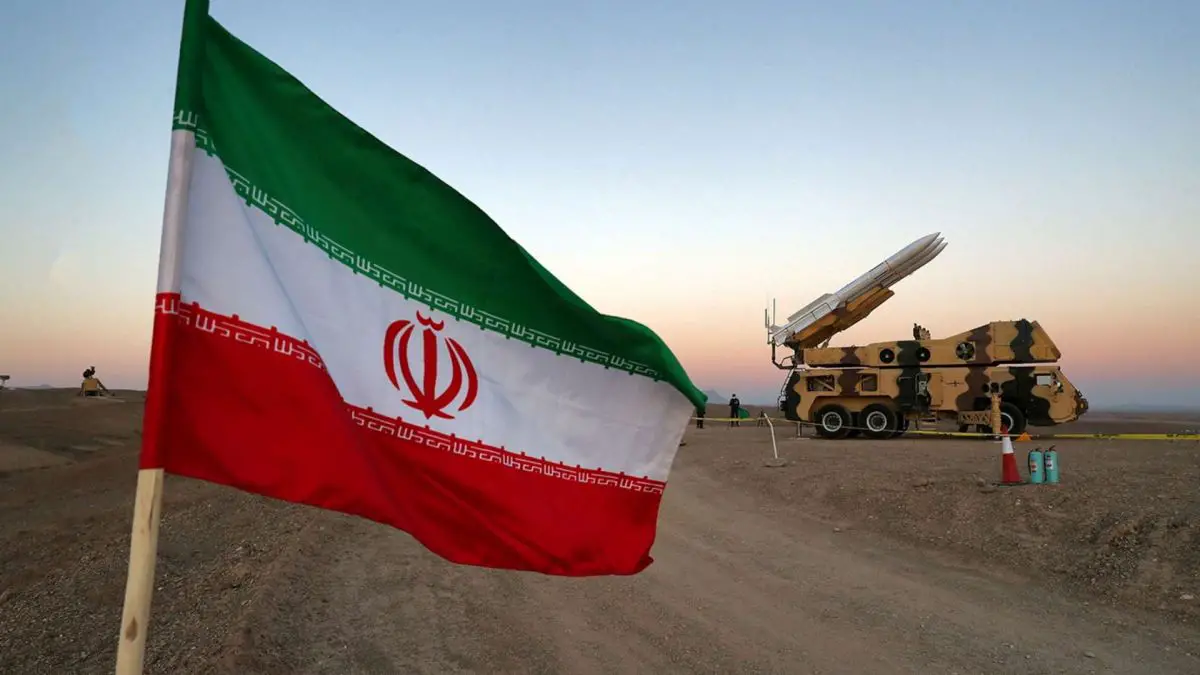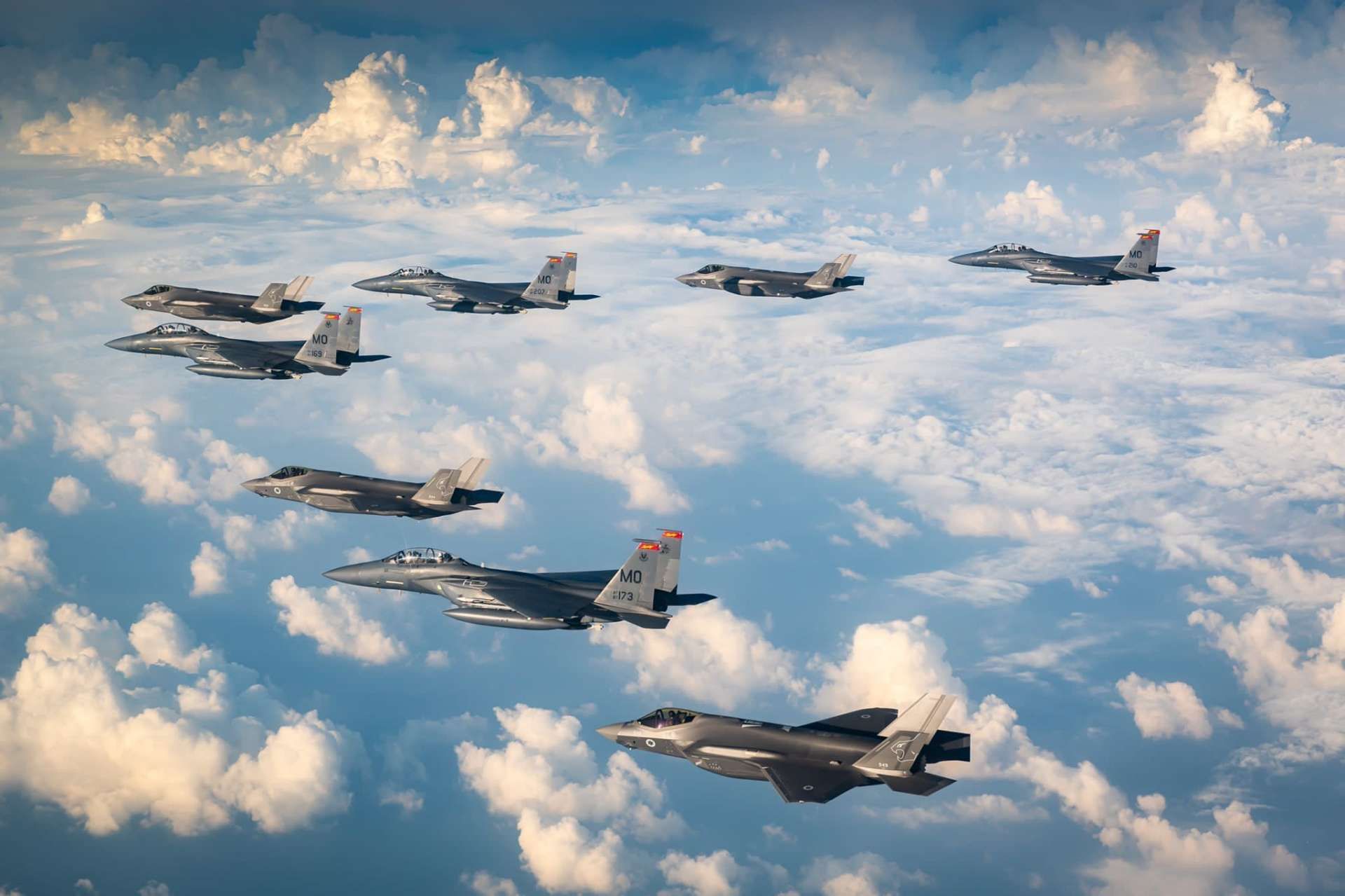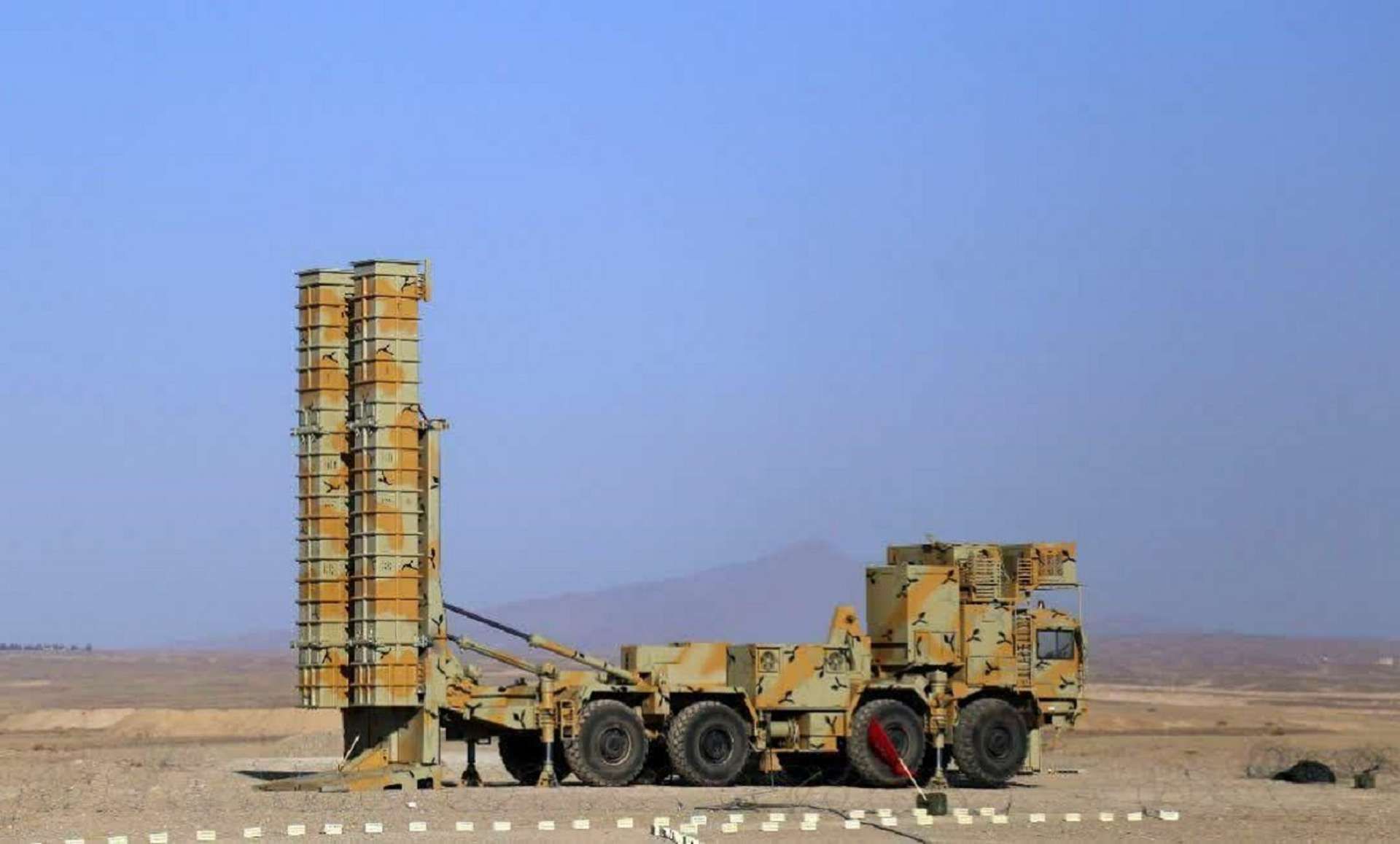Breaking news
Iran arms Hezbollah to shoot down US fighter jets in Israel with surface-to-air missiles.
According to a recent report by Al-Jarida on May 27, 2024, the Lebanese militant group Hezbollah is preparing to test an Iranian surface-to-air missile capable of downing US-supplied Israeli fighter jets and is also preparing for potential operations, including ambushes, infiltrations into Israeli positions, and the capture of soldiers. The group continues its military activities in support of Gaza and is committed to prolonged engagement regardless of the conflict's duration.
Follow Army Recognition on Google News at this link

Given Hezbollah's close ties with Iran and their shared strategic interests, such advancements in missile technology could be disseminated among Iran's network of allied groups, thereby enhancing their ability to counter US and allied air operations in the Middle East, including the Gulf region. (Picture source: Russian social media)
Hezbollah’s strategy involves increasing military pressure on Israel, which it believes could intensify internal pressure on Prime Minister Benjamin Netanyahu's government, potentially leading to negotiations to end the conflict. Concurrently, Hezbollah is preparing for the possibility that negotiations may fail, especially if Netanyahu continues with prolonged military operations. The duration of the conflict remains uncertain, with expectations that it could last beyond the upcoming U.S. elections in November.
These scenarios were discussed at a recent meeting in Tehran, attended by leaders of various factions within the "Axis of Resistance." Sources close to Hezbollah reported that the directive from Tehran is to provide full support to allied forces across the region, with preparations for further escalation if ceasefire efforts fail.
Following this meeting, Hezbollah and the Palestinian movement Hamas coordinated their efforts, emphasizing the need to synchronize their escalation and negotiation strategies. They urged Hamas to maintain a firm stance in negotiations without making concessions. Hamas has informed intermediaries that its position is to end the war and secure the withdrawal of Israeli forces from Gaza, with the hostage release process extended over time to prevent an immediate resumption of hostilities.
Hezbollah and Hamas believe that Israel will face challenges regarding the hostage situation, especially with increased pressure from Washington as the U.S. presidential elections approach. The Tehran meeting also discussed military escalation from supporting fronts and the importance of Hamas diversifying its military operations within Gaza to demonstrate its continued operational capabilities across the region.
Hezbollah sources revealed that the group is preparing significant actions against Israel, involving the use of long-range precision missiles and surface-to-air missiles capable of targeting Israeli warplanes. The missile, originally Russian-made and modified with Iranian technology, is expected to be tested. Successful deployment of this missile could impact Israel significantly, similar to previous instances where Hezbollah downed Israeli drones.
Hezbollah's tactical plans include ambushing Israeli patrols, surrounding them with fire, infiltrating Israeli positions, and capturing soldiers. Based on these informations, the group seems to have developed a comprehensive operational plan and will execute these actions as needed, without haste.

The Israeli Air Force (IAF) operates some of the world's most advanced fighter jets, including the F-35I Adir, F-15I Ra'am, and F-16I Sufa, each based on a well-known US fighter jet. (Picture source: Israeli MoD)
Given Hezbollah's close ties with Iran and their shared strategic interests, such advancements in missile technology could be disseminated among Iran's network of allied groups, thereby enhancing their ability to counter US and allied air operations in the Middle East, including the Gulf region. This capability extension represents a significant shift in the regional power dynamics, potentially deterring US air operations and complicating military strategies for the US and its allies.
Iran has developed several missile systems capable of targeting Israeli fighter jets, each designed to counter different types of aircraft used by the Israeli Air Force. To date, the Israeli Air Force (IAF) operates some of the world's most advanced fighter jets, including the F-35I Adir, F-15I Ra'am, and F-16I Sufa, each based on a well-known US fighter jet.
For targeting the F-35I Adir, a variant of the F-35 Lighting II stealth fighter jet, Iran relies on the Bavar-373 and Khordad 15 systems. The Bavar-373, similar to the Russian S-300 and S-400, is designed to intercept aircraft, drones, and missiles at high altitudes and long ranges. It uses Sayyad-4 missiles capable of engaging stealth aircraft like the F-35. This system has been deployed in Syria specifically to counter Israeli F-35s, showcasing its advanced capabilities in intercepting modern stealth technology. Similarly, the Khordad 15, unveiled in 2019, uses passive phased array radar systems to detect and engage stealth targets. It can track and destroy six targets simultaneously, including fighter jets, drones, and cruise missiles, making it a formidable opponent against the F-35.
For engaging the F-15I Ra'am, a variant of the F-15E Strike Eagle, Iran utilizes the Sayyad-2 and Sayyad-3 missiles as part of the Talash air defense system. These medium to long-range missiles have been upgraded to improve their accuracy and effectiveness against high-speed and high-altitude targets. Additionally, the S-200, an older Soviet-era missile system that has been significantly upgraded by Iran, remains a threat due to its long-range capabilities and effectiveness against large aircraft.
The F-16I Sufa, a variant of the F-16 Fighting Falcon, faces threats from systems like the Tor-M1 and Fateh-110. The Tor-M1 is a highly mobile short to medium-range surface-to-air missile system designed to engage aircraft, helicopters, and precision-guided munitions at lower altitudes. Its mobility and quick reaction time make it particularly effective against the agile F-16I. The Fateh-110, while primarily a surface-to-surface missile, can be adapted for anti-aircraft purposes and is equipped with a precision guidance system, enhancing its capability to target moving aircraft.
Other Israeli aircraft are targeted by systems such as the Mersad, based on the American Hawk missile system. The Mersad is a medium-range air defense system integrating modern radar and electronic warfare capabilities, making it effective against a variety of aerial threats, including fighter jets, drones, and cruise missiles.

The Bavar-373 air defense system has already been deployed in Syria, specifically to counter Israeli F-35s by using Sayyad-4 missiles capable of engaging such stealth aircraft. (Picture source: Mehr News Agency)
Iran has recently developed an array of long-range missiles that significantly enhance its strategic military capabilities and could be potentially handed over to Hezbollah. One of the most notable long-range missiles in Iran's arsenal is the Khorramshahr-4. Unveiled in 2023, the Khorramshahr-4 has a range of approximately 2,000 kilometers and can carry a warhead weighing up to 1,500 kilograms. This missile is designed to evade radar detection and penetrate enemy air defense systems due to its low radar signature. It represents an advancement in Iran's missile technology, with origins linked to North Korean missile designs.
Another addition is the Sejjil missile, a two-stage solid-fuel missile with a range of around 2,000 kilometers. The Sejjil's solid-fuel technology allows for quicker launch times and greater mobility compared to liquid-fueled missiles, making it less vulnerable to pre-emptive strikes. The Emad missile, with a range of 1,700 kilometers, is another component of Iran's long-range missile capabilities. It is an intermediate-range ballistic missile (IRBM) that features a maneuverable reentry vehicle, improving its accuracy and making it more challenging to intercept. The Emad can carry a payload of approximately 750 kilograms.
Iran has also demonstrated its ability to launch long-range ballistic missiles from naval platforms. In February 2024, the Islamic Revolutionary Guard Corps (IRGC) launched ballistic missiles from the Shahid Mahdavi warship. These missiles are capable of striking targets up to 1,700 kilometers away, showcasing Iran's capacity to deploy long-range missiles from both land and sea. The Ghadr missile, another key asset, has a range of around 1,600 kilometers and is derived from the Shahab-3 missile. The Ghadr is a single-stage, liquid-fueled missile that has been in service for several years, known for its reliability and accuracy improvements over earlier designs.
Additionally, the Paveh cruise missile has been reported with a range of 1,650 kilometers. It is a turbojet-powered missile designed for precision strikes, further extending Iran's reach and ability to conduct long-range operations.
Iran has recently made notable advancements in its missile technology, notably with the development of hypersonic missiles. The most prominent among these is the Fattah-1, which was unveiled in June 2023. This missile is claimed to achieve speeds between Mach 13 and Mach 15, making it capable of traveling at 15,000 to 18,500 kilometers per hour. The Fattah-1 has a range of 1,400 kilometers (870 miles) and is designed to penetrate sophisticated missile defense systems due to its high speed, stealth design, and maneuverability within and outside the Earth's atmosphere.
Iran has also introduced an upgraded version, the Fattah-2, which continues to build on the capabilities of its predecessor. Although the Fattah-2 is yet untested in operational conditions, it is claimed to have enhanced maneuverability and the ability to evade advanced air defense systems. This missile incorporates a movable nozzle and a solid-fuel propellant system, allowing it to change its trajectory mid-flight and perform complex maneuvers, making interception challenging.


























